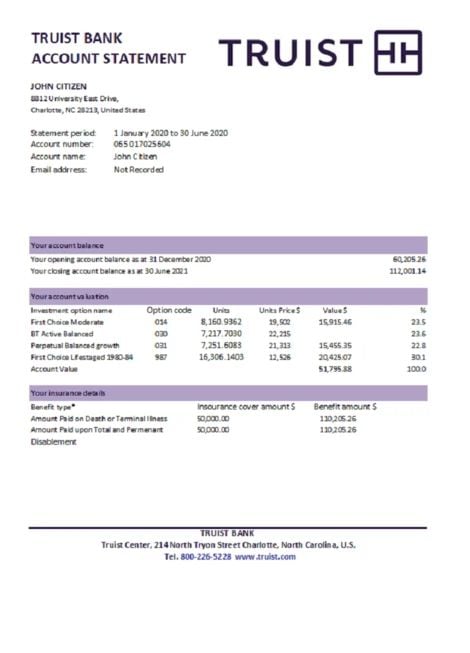Have you ever glanced at your bank statement and felt your heart skip a beat? 😱 Unexpected charges, missing deposits, or incorrect balances can turn your financial world upside down. But don’t panic! 🚫💸 The good news is that you’re not powerless in the face of these errors.
Dealing with bank statement discrepancies can be frustrating and time-consuming. Many people feel overwhelmed by the prospect of challenging a financial institution, often believing that the process is too complex or that their concerns won’t be taken seriously. However, understanding the bank statement dispute process is crucial for protecting your hard-earned money and maintaining financial peace of mind.
In this comprehensive guide, we’ll walk you through the steps to correct errors on your bank statement effectively. From identifying discrepancies to navigating the investigation process, we’ll equip you with the knowledge and tools you need to stand up for your financial rights. Let’s dive into the world of bank statement disputes and discover how you can become your own financial advocate! 💪💼
Understanding Bank Statement Errors
Common types of bank statement errors
Bank statement errors can take various forms, each with its own implications. Here are some of the most common types:
-
Duplicate transactions
-
Incorrect amounts
-
Missing deposits or withdrawals
-
Unauthorized charges
-
Misclassified transactions
| Error Type | Description | Potential Impact |
|---|---|---|
| Duplicate transactions | Same transaction appears twice | Inflated expenses or income |
| Incorrect amounts | Wrong amount recorded for a transaction | Inaccurate account balance |
| Missing transactions | Deposits or withdrawals not recorded | Underreported income or expenses |
| Unauthorized charges | Fraudulent or mistaken charges | Financial loss and security concerns |
| Misclassified transactions | Transactions categorized incorrectly | Difficulty in budgeting and tax reporting |
Impact of errors on your financial health
Bank statement errors can significantly affect your financial well-being:
-
Inaccurate account balances leading to overdraft fees
-
Missed bill payments due to perceived lack of funds
-
Incorrect credit reporting affecting loan applications
-
Tax implications from misreported income or expenses
-
Stress and time consumption in resolving discrepancies
Importance of regular statement review
Regular review of your bank statements is crucial for maintaining financial accuracy and security. By doing so, you can:
-
Detect errors early, making them easier to resolve
-
Identify fraudulent activity promptly
-
Ensure all transactions are accounted for
-
Maintain an accurate picture of your financial status
-
Catch recurring fees or subscriptions you may have forgotten
Now that we’ve explored the types of bank statement errors and their impact, let’s look at how to prepare for the dispute process.
Preparing for the Dispute Process
A. Gathering necessary documentation
When preparing to dispute a bank statement error, it’s crucial to gather all relevant documentation. This step forms the foundation of your case and can significantly impact the outcome of your dispute.
Key documents to collect include:
-
Bank statements (both digital and physical copies)
-
Transaction receipts
-
Correspondence with the bank
-
Any relevant contracts or agreements
To organize your documentation effectively, consider using this simple table:
| Document Type | Date Range | Relevance to Dispute |
|---|---|---|
| Bank Statements | Last 3 months | Shows error pattern |
| Transaction Receipts | Date of error | Proves correct amount |
| Bank Correspondence | Since error occurred | Demonstrates communication |
B. Identifying the specific error
Once you have your documentation in order, carefully review your bank statements to pinpoint the exact error. Common types of errors include:
-
Duplicate charges
-
Incorrect transaction amounts
-
Unauthorized transactions
-
Misapplied deposits or withdrawals
Create a detailed log of the error, noting:
-
Date of the transaction
-
Description of the error
-
Correct amount vs. erroneous amount
-
Any associated transaction numbers or reference codes
C. Determining the timeframe for reporting errors
It’s crucial to understand the timeframe for reporting errors to your bank. Most financial institutions have specific deadlines for disputing transactions:
-
For electronic transfers: 60 days from the statement date
-
For other transactions: Generally 30-90 days, depending on the bank’s policies
Check your bank’s terms and conditions or contact customer service to confirm the exact reporting window for your specific case.
D. Calculating the financial impact
Accurately assessing the financial impact of the error is essential for your dispute. Consider:
-
Direct impact (e.g., overcharged amount)
-
Indirect consequences (e.g., overdraft fees)
-
Potential long-term effects (e.g., impact on credit score)
Create a comprehensive breakdown of all financial implications to strengthen your case when initiating the dispute process with your bank.
Resolving the Dispute
Interpreting the investigation results
After the bank completes its investigation, you’ll receive a detailed report. This report typically includes:
-
The outcome of the investigation
-
Evidence supporting the decision
-
Any adjustments made to your account
To interpret these results effectively:
-
Review the report thoroughly
-
Compare the findings with your original dispute claim
-
Check for any discrepancies or unclear information
| Result | Meaning | Next Steps |
|---|---|---|
| Error confirmed | Bank agrees with your dispute | Wait for account adjustment |
| No error found | Bank disagrees with your claim | Consider appealing or seeking additional assistance |
| Partial error | Bank agrees with part of your claim | Review partial adjustment and decide on further action |
Accepting the resolution
If the bank’s investigation confirms your claim, they will:
-
Correct the error in your account
-
Provide written confirmation of the changes
-
Refund any fees associated with the disputed transaction
Ensure you receive all promised adjustments and keep the resolution documentation for your records.
Appealing an unfavorable decision
If you disagree with the bank’s findings, you have the right to appeal. To do so:
-
Gather additional evidence to support your claim
-
Write a formal appeal letter detailing why you believe the decision is incorrect
-
Submit the appeal within the bank’s specified timeframe
Seeking additional assistance if needed
If your appeal is unsuccessful or you’re unsatisfied with the bank’s handling of your dispute, consider:
-
Contacting your local consumer protection agency
-
Filing a complaint with the Consumer Financial Protection Bureau (CFPB)
-
Seeking advice from a financial advisor or attorney
Remember, persistence and thorough documentation are key to resolving bank statement disputes successfully. With the dispute resolved, it’s important to take steps to prevent similar errors in the future.




